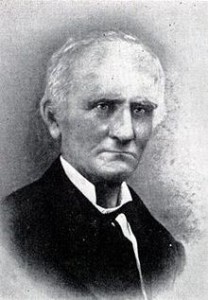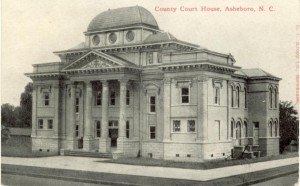How Asheborough Became Asheboro
- 1780 – The county seat was relocated from Johnstonville (now known as browns Crossroads near Randleman) to a small village more centrally located within the county.
- 1793 – Jesse Hendly deeded two acres to the county for the “use of the Publick.” Named for Samuel Ashe, governor of North Carolina from 1795-1798, the first session of court was held in Asheborough in June of 1793.
- 1796 – The state legislature granted Asheborough its original charter on December 25, 1796.
- 1814 – Asheborough was granted an official post office.
- 1824 – Jonathan Worth, a young attorney and legislator, moved to Asheborough and soon became one of the community’s most prominent members. Worth served six terms in the state legislature, two terms as state treasurer, and two terms as governor (1865-1868).

- 1829 – The town of Asheborough created a formal government.
- 1834 – Methodist Episcopal Church, the first church in the town, was built.
- 1851 – The Fayetteville and Western Plank Road was completed through Asheborough.
- 1876 – Asheborough had two churches and two academies (one for boys and one for girls).
- 1889 – The High Point, Randleman, Asheborough and Southern Railroad made it to town, fueling an era of rapid economic and population growth.
- 1897 – The town’s first bank, the Bank of Randolph, and the Asheboro Telephone Company were both established.
- 1909 – The county courthouse was completed.

- 1910 thru 1920 – The town experienced a period of rapid growth making it necessary for a fire department, hospital, and new school to be established.
- 1923 – The Post Office Department changed the spelling of the town’s name from Asheborough to Ashboro, triggering an outcry. A compromise was reached, and the town’s official name became Asheboro.
